
1017288 – Wansdyke and associated monuments from east of The Firs to the eastern side of Tan Hill
Historic England Scheduled Monument: 1017288 – Grid Tile: SU06SE – Wiltshire
GE Map

OS Map
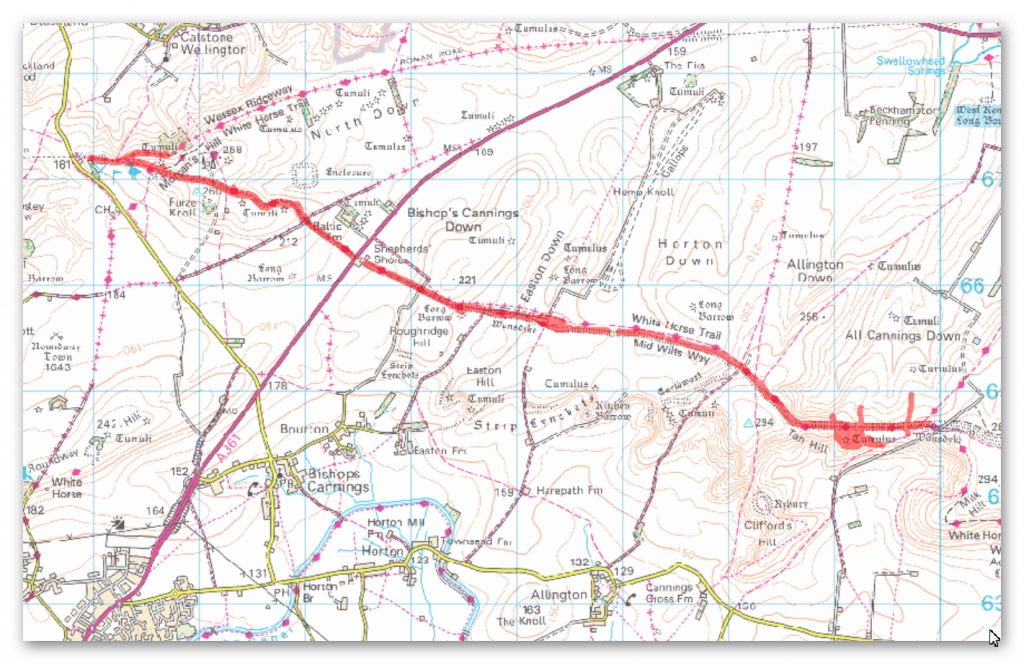
1800 Map
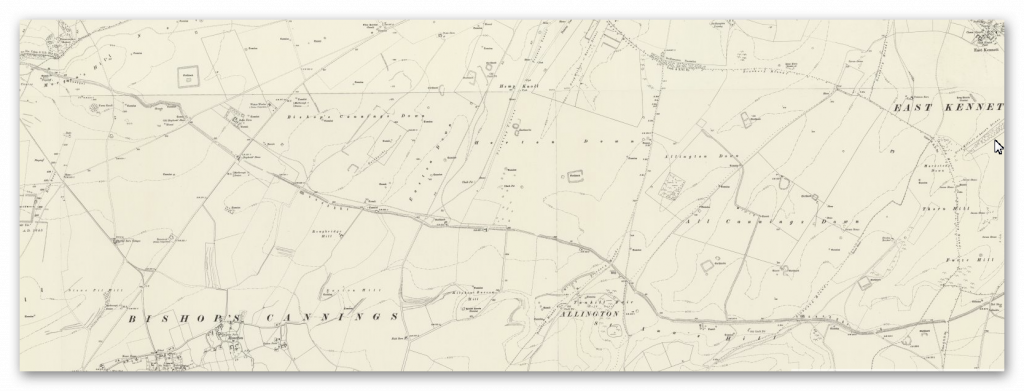
LiDAR Map
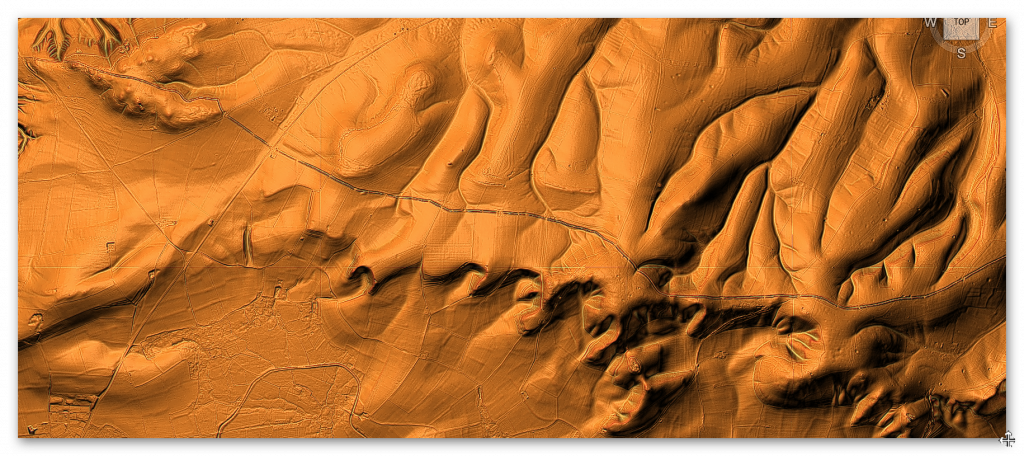
LiDAR Map (with Prehistoric water levels)
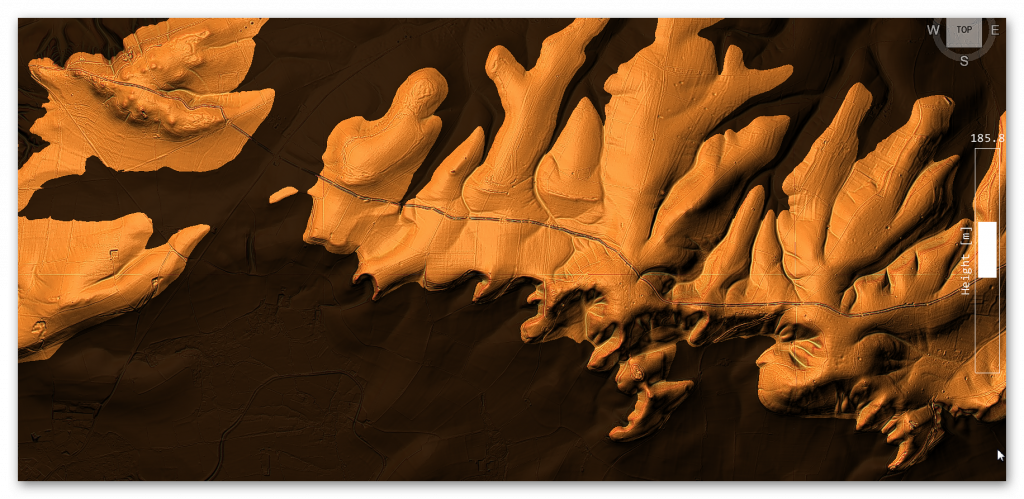
Dyke: SU 02982 67010
Length (m): 6270
Orientation: W – E
Class Designation*:
Overall Width (m): 28
Ditch Width (m): 14
Bank Width (m): 14
Connectivity**: Paleochannel
Ditch Shape: ?
Volume (cu.m): 114,114 (@ 1.3 depth)
Man hours to complete:
Estimated Construction Date: ?
Number of Quarries*** (within 200m): 16
Number of Springs**** (within 200m): 0
Scheduled Monument Report:
The monument, which falls into 12 areas of protection, includes part of Wansdyke running from east of The Firs to the eastern side of Tan Hill,(a kite-shaped enclosure situated on the northern side of Wansdyke on Easton Down), a section of Roman road on Morgan’s Hill, a Neolithic long barrow, five other linear earthwork sections crossed by or abutting the Dyke and 11 Bronze Age bowl barrows adjoining Wansdyke or partially overlain by it.
From the west, Wansdyke runs for roughly 72km ending just outside Marlborough at its east end. The approximately 8.5km long section from east of The Firs to the eastern side of Tan Hill runs across the Downs south west of Avebury and includes the best-preserved continuous length of Wansdyke.
The Dyke includes a substantial earthwork bank which measures up to 30m wide and stands from 1m to 3m high. For the majority of its length the bank lies south and west of a substantial open ditch. This also varies in width but measures up to 36m wide and remains open to a depth of 2m in places.
The majority of the bank and ditch sections in this area together measure from 30m to 40m across. A further, slighter, bank beyond the ditch to the north is also visible on several sections. The Dyke was built in sections of varying length, with breaks which would have allowed controlled traffic to pass from east to west and for the movement of military patrols beyond the defences. The Dyke is later in date than the Roman road but was already built by the mid-ninth century, when it is mentioned in a Charter.
It is generally believed to be a military frontier work between Wessex and Mercia. It is designed to hold the edge of the high ground on the Downs and to protect the lower lying plains to the south west. The name derives from Woden’s Dyke, after Woden, an important Anglo-Saxon god whose name survives in the word `Wednesday’.
The earlier Roman road includes a 800m long section of the route from Cunetio (Mildenhall) to Verlucio (Sandy Lane). It runs east to west along the north slope of Morgan’s Hill and includes a rare engineered bend at the head of a dry valley after which point the later dyke meets it and runs along its line. The road measures between 8m and 10m wide and its outer (north) edge comprises a well-constructed embankment which stands up to 2m high.
The road is terraced into the slope at this point and the Dyke follows the line of the road for a distance of over 300m. South east of the wireless station on Morgan’s Hill, a 50m long, slightly curved section of linear earthwork runs north from beneath Wansdyke to end in a terminal. It is part of a longer feature, the remainder of which starts about 20m north, runs to the edge of Horsecombe and is the subject of a separate scheduling (SM 21900).
The south end of this feature is not known for certain but it appears to run beneath the Wansdyke for some distance to the east. Immediately south of the Dyke on Roughridge Hill is a Neolithic long barrow. The barrow mound measures about 75m long and up to 32m wide. It stands up to about 1m high. Flanking the mound, but no longer visible at ground level due to the spreading of the mound caused by ploughing, are two quarry ditches which will survive as buried features.
Although the only example in the scheduling, the barrow is one of a line of more than four Neolithic long barrows which are strung out east to west along the ridge of the Downs, all spaced roughly 1km from their nearest neighbour in either direction.
The enclosure on Easton Down is roughly kite-shaped and has a 6m wide bank which survives up to 0.2m high. Beyond this is a 5m wide ditch which has become infilled due to cultivation but remains visible in places up to 0.5m deep. This ditch has a counterscarp bank 3m wide and up to 0.6m high in the north west corner. Although the western end has been levelled by cultivation, it is known from aerial photographs and partial excavation to survive as a buried feature. Previous records also show that the inner bank originally stood 1.5m or more in height while the counterscarp bank stood 1m high.
The excavations showed that the southern boundary of the enclosure lies below the line of the later Wansdyke, which appears to change course slightly at this point. The excavations also produced Romano-British pottery sherds from the interior of the monument, indicating that it was a settlement during that period.
The section of Wansdyke on Tan Hill crosses a series of four earlier linear boundary ditches which form part of an earlier prehistoric land division. Three of these run from north to south and the last runs east to west and is abutted by at least one of the others. These boundaries survive as buried features clearly visible on aerial photographs and, despite being levelled in places, remain visible at several points above ground. The ditches vary in width from 3m to 8m across and several have adjacent banks about 0.75m wide and up to 0.3m high.
Together they form three sides of a rectilinear field within which is located a small Bronze Age barrow cemetery containing five bowl barrows. Two of these are partially overlain by the Wansdyke. The barrow mounds measure from 12m to 20m in diameter and stand between 0.2m and 1m high.
All but one of these are surrounded by quarry ditches which vary from 1m to 2m in width and survive buried below the present ground level. There are six further bowl barrows along the length of Wansdyke from east of The Firs to the eastern side of Tan Hill which are partially overlain by the Dyke. Some of these are outliers of groups of barrows or cemeteries, the remainder of which, where appropriate, are the subject of separate scheduling’s. These barrows vary from 10m to 20m in diameter and stand up to 3m high. Their surrounding quarry ditches measure from between 1m to 2m wide.
Several barrows near to Old Shepherds’ Shore were partially excavated in the 1850s and finds included burnt animal and human bone and fragments of Bronze Age pottery.
Analysis:
LiDAR Analysis shows that this Dyke goes over Morgan’s Hill which is covede with quarries – in the river valley it is smaller and straight, suggesting a Roman extension but through both the hill and river valley ancient barrows cover the area showing it weaved through these features or they were built after the construction of the Dyke.
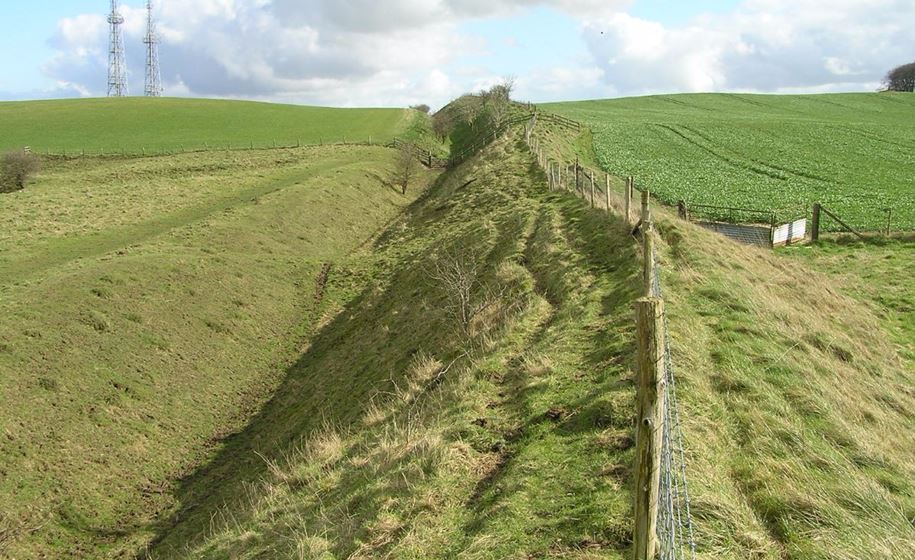
References:
https://prehistoric-britain.co.uk/dyke-construction-hydrology-101
https://historicengland.org.uk/listing/the-list/list-entry/1017288
Further Reading
For information about British Prehistory, visit www.prehistoric-britain.co.uk for the most extensive archaeology blogs and investigations collection, including modern LiDAR reports. This site also includes extracts and articles from the Robert John Langdon Trilogy about Britain in the Prehistoric period, including titles such as The Stonehenge Enigma, Dawn of the Lost Civilisation and the ultimate proof of Post Glacial Flooding and the landscape we see today. . (TSE DVD Introduction)
Robert John Langdon has also created a YouTube web channel with over 100 investigations and video documentaries to support his classic trilogy (Prehistoric Britain). He has also released a collection of strange coincidences that he calls ‘13 Things that Don’t Make Sense in History’ and his recent discovery of a lost Stone Avenue at Avebury in Wiltshire called ‘Silbury Avenue – the Lost Stone Avenue’. (TSE DVD Introduction)
Langdon has also produced a series of ‘shorts’, which are extracts from his main body of books:
For active discussions on the findings of the TRILOGY and recent LiDAR investigations that are published on our WEBSITE, you can join our and leave a message or join the debate on our Facebook Group.
For in-depth information about British Prehistory, we invite you to explore www.prehistoric-britain.co.uk, an extensive resource featuring archaeology blogs and investigations. This collection includes modern LiDAR reports that shed light on ancient landscapes. Additionally, you will find extracts and articles from the Robert John Langdon Trilogy, offering fascinating insights into Britain during the Prehistoric period. Some notable titles from the trilogy include “The Stonehenge Enigma,” “Dawn of the Lost Civilisation,” and groundbreaking evidence of Post Glacial Flooding and its impact on the landscape we see today.
Robert John Langdon has further enriched the exploration of Prehistoric Britain through his YouTube web channel, boasting over 100 investigations and video documentaries that complement his classic trilogy. In addition to his extensive work, Langdon has unveiled a compilation of intriguing coincidences titled “13 Things that Don’t Make Sense in History.” He has also brought to light his recent discovery of a forgotten Stone Avenue in Avebury, Wiltshire, aptly named ‘Silbury Avenue – the Lost Stone Avenue.’
For those who wish to actively engage in discussions about the findings from the TRILOGY and recent LiDAR investigations, we invite you to join our community. You can participate by leaving messages and joining debates on our dedicated Facebook Group. We encourage open dialogue and the exchange of ideas to foster a deeper understanding of Prehistoric Britain and its fascinating mysteries.
As you embark on your journey through British Prehistory, we hope these resources provide valuable insights and inspire further exploration of this captivating field of study.
NB. Recent investigations have indicated the location of hundreds of Quarries and pits built around Wansdyke and how the Dykes were used to transport the minerals transported in these Dykes – see the main site for details of blogs and books on this new discovery.
